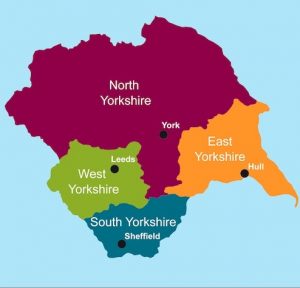Top 50 Tips For Phenomenal Google Advertising West Yorkshire
When you’ve read this why not look at the rest of my website to see if there’s anything else which may help you – just click HERE

AdWords Setup
1. Campaign Strategy – It’s a great idea to understand the strategy of your campaign from the start. Make sure you know how you want to target your audience and consider: devices your audience is using, areas that they are looking in/are in and what you want as a result of them visiting your website. Will your strategy include Call-only campaigns? Will it include remarketing? IF you know all of this from the get go then that’s step one complete.
2. Competitor Research – Look at what your competitors are doing. Use tools such as SEMrush to understand what keywords your competitors are bidding for, what their ads look like and how much they’re spending. This gives you a knowledge on where to better their campaigns with your own.
3. Budgeting – Be realistic with your budget. Look at Google’s Keyword Planner or speak to Google’s help team and ask for some stats on your industry. IE; they can tell you that an electricians average cost per click is £1, average CTR is 2.5% and average cost per conversion is £100. They’ll also give you an average daily spend in your industry. Use this when deciding on how much to spend.
4. Search Ads – These adverts are the most popular and most effective for most budgets. Think in DAILY budgets IE: £200 per month is around £6.66 per day.
5. Call-only Ads – These allow you to target users only using a mobile device to search. Instead of paying for a click to your website your budget works towards a click-to-call. The result is an instant phone call.
6. Campaign Goals – Know your campaign goals. What are you looking for? Calls? Enquiry forms? General website traffic? Purchases? When looking at your goals, mirror this in your ad copy, bidding strategy, max CPC and landing pages. If you want purchases, have an ad that lands on a product page and use striking ad copy to stand out from the competition.
7. Campaign Structure – Structure is one of the biggest factors within AdWords. A poorly structured campaign can be the main reason to bad performance. You should structure your account as follows:
Campaigns – Set different campaigns up for different products & services. Different products & services will have different margins. This means that you will want different strategies for each campaign or product & service.
Ad Groups – Split your campaign into Ad Groups. Ad Groups can be split into different match types. Set up one ad group for each match type and include correlating keywords inside them. You could call your Ad Groups ‘Broad Match’ ‘Exact Match’ & ‘Phrase Match’.
Ads – Considering that your campaign and keywords are all focussing on the same product & service, you can create one set of ads and simply copy and paste these ads into the different Ad Groups.
8. Networks – Do you want your ads to appear on Google’s network or just Google itself? Generally to maximise your budget on Google its best to disable network ads so that all of your budget only goes on Google search.
9. Promotional Codes – Most new advertisers on Google get a welcome voucher for £50-75. Don’t just use it to save money. Add it to your current budget over a one month period. As an example, if you have a daily budget of £20, divide the £75 by the number of days in a month that your campaign is scheduled for. Then add that number to your daily budget. £75/30 days = £2.50. Add the £2.50 to the £20 per day budget and see if the increase in budget has a good effect. The following month, you may wish to consider a budget increase of £2.50/day.
AdWords Settings
10. Location Targeting – This is a big one. When considering your targeted locations, look at how many impressions you’ll look at generating and bear in mind existing statistics. A campaign that has a modest budget shouldn’t target nationwide searches. The campaign will become too diluted and the budget could run out in a matter of a couple of hours. Your budget should reflect targeting.
11. Advanced Location Targeting – Do you want to target users who are physically in your location or do you want to target users that are searching for your location? To simplify ‘Social Media Marketing in Wakefield’ this user is looking for a Facebook marketeer in Wakefield and they live in Wakefield. ‘Google Marketing’ this user is looking for a Google marketeer in Wakefield but lives in London. The saying goes ‘not all business is good business. The latter example could have a lower chance of conversion.
12. Bid Strategy – There are different types of bid strategy to consider. Take a look below at what they all mean.
13. Manual CPC – With this option, you are in control. You decide how much you want to pay for a click.
14. Enhanced CPC – Google will look at previous conversion history for you. You set a manual max CPC, and if Google thinks it’ll likely result in a conversion, during that search query it’ll increase your bid by up to 30%.
15. Automatic CPC – This strategy enables you to maximise clicks. You’ll get the most clicks possible out of your budget. Bear in mind, however, that not all traffic is beneficial. You may want to be clicked on before anyone else. This will be unlikely with a position below 3 or 4.
16. Ad Delivery – How are your ads performing? Are you getting a low CTR but not a great impression share? In this case, choose accelerated ad delivery so that Google can show your ads more frequently.
17. Ad Schedule – look at competition and likelihood of conversion. For example, if you’re a mobile tyre fitter in Wakefield, you may want to consider scheduling your ads to show only during the night and early morning. At this point, your competitors will likely have turned off their ads. This will result in lower CPC but also higher conversion rates.
18. Mobile Bid Enhancement – How important is a click from a mobile device? Smart insights wrote a great article on mobile device conversions. Consider increasing mobile clicks by at least 25% to ensure you’re at the top for these queries.
AdWords Conversion Tracking
19. Conversion Calls From Ads – When someone looks at your advert on any device, if you have extensions set up, they’ll see a phone number.
Google can track the number of calls from these adverts for you. You can set up conversions at account level.
20. Conversion Calls From Websites – In this event, Google can place a unique forwarding number to display where your phone numbers usually display. Only if your website is visited as a result of an ad click, the new number will display. Google can then track the number of calls that come from the website as a result of Google AdWords.
21. Conversion Purchases From Website – If you run an e-commerce site, you’ll want to know how effective AdWords is. Use this conversion tracking to see how many purchases you are generating.
22. Conversion Enquiry Form Submissions – Enquiry forms can be a powerful tool. A fantastic call to action which provides you with lead data in a few taps and clicks. Differentiate the ones coming through Google AdWords by adding this conversion tracking.
AdWords Adverts
23. Understanding Quality Score – Quality score is a very important aspect to understand. At the end of the day, it can be the main factor that deciphers your costs and results. Quality score is worked out by landing page relevance, ad relevance, keyword relevance, expected CTR and more.
24. Landing Pages – Make sure your landing pages have similar content to the ad copy that points to it. This will increase quality score and reduce CPC.
25. Display URL’s – Use effective display URL’s. This gives you an extra chance to explain to your users where they can potentially be going to as a result of clicking.
26. Ad Copy – Make sure your copy is compelling and ensure it uses similar content to the keyword it points to along with the landing page. Similarities in content between the three will increase the overall quality score on keywords which is always great.
27. Dynamic Ads – Dynamic ads are a great new way to display to users. You can get Google to automatically determine what to say to a user. It will dynamically generate the headline and URL’s. All you have to do is add a generic description to cover the keywords in the Ad Group.
28. Number of Ads – Create as many adverts as possible. Use variations of your keywords in them and also place keywords at different points in the ads. Experiment and figure out which ones perform the best.
29. Mobile Ads – This is very important, even more so if you value mobile clicks as of high importance. For mobile ads, you should reduce the character length on each by 10.
30. % Served – Which ads are performing best? Don’t change these ads as they are giving you a high quality score and Google likes them.
AdWords Extensions
31. Understanding Extensions – Ad Extensions give you more SPACE on page one. They also offer users more information on your businesses products & services. They affect your Ad Rank, meaning using these effectively could place you higher up on the search results.
32. Callout Extensions – Callout extensions are short punchy snippets of text. They can show any text info. I recommend using your USP’s here to stand out from the competition.
33. Call Extensions – Get users calling without visiting your website! Call extensions display your phone number on your ad or display a call icon on mobile ads. Ensure this extension is set and have one with mobile preference.
34. Review Extensions – Showcase your businesses reviews. Prove to users why they should be choosing you.
35. Sitelink Extensions – Do you have relevant pages or alternative landing pages? Enable sitelinks to fill more space on page one as well as showing users more information about your website.
36. Structure Snippet Extensions – Do you have useful bits of data to show to users? These display similarly to callout extensions and can include items such as product type, category and other info.
37. Automated Extensions – This enables you to understand how your ads perform when seller and consumer ratings are shown on your ads. If they perform well, then you know to keep using your seller ratings.
AdWords Keywords
38. Research – Keyword research is incredibly important. The benefit with Google Ads is that they do most of the hard work for you. They offer broad match and phrase match options so that you’re covered with variants of search terms.
39. Tools – Google will suggest search terms during the build of an ad group. The system will look at your website and show you a list of potential search terms that people often look for. Another tool that you may want to consider is the keyword planner (mentioned above). It will show you the number of monthly searches and different ideas for search terms to add to your campaign. Search Engine Land has a great article on the keyword planner.
40. Broad Match Modifier – Broad match modifiers can be great for when you’re starting out, but it can be costly. To use modifiers, add ‘+’ before each keyword. As an example, if you’re a plumber that wants to promote boiler installations, you should type ‘+boiler +installations’. This means that no matter what, as long as those two words are entered in a search query, you’ll display for these searches.
41. Phrase Match – Phrase match is another option. Enable phrase match by typing ” before and after your keyword(s). For example “boiler installation”. This will enable you to show for close variants of a keyword such as ‘boiler installations’ (plural) or ‘boiler install’.
42. Exact Match – Exact match does what it says on the tin. You’ll appear only if someone enters that exact query. To use exact match, use ‘[‘ before and ‘]’ after the keyword(s). An example would be [boiler installation].
43. Search Terms – Once you’ve set up a mixture of the above keyword match types, you’ll be able to see exactly what people have typed in during a search query. Under the keywords tab, select ‘search terms’. You can then add these to your campaign as exact match keywords to increase coverage and decrease costs. You can also add some queries that may have been irrelevant to you as a negative keyword.
44. Negative Keywords – The importance of negative keywords can’t be stressed enough. They stop you from showing for queries that you don’t want to appear for. If you have a broad match modified keyword for ‘+install’, you will appear for ‘how to install a boiler’. A click from this query won’t result in a conversion but will have cost you money. Here at Be Seen Be Found I can help you with setting up your generic negative keywords and continuous monitoring – just ask!
AdWords Reporting
45. Average Position – Your average position defines where you display on page one. Obviously, you’ll want your average position to be as high as possible. To increase average position, you’ll need high quality scores, mixed with a decent Max CPC.
46. Impressions – Impressions are the number of views on your ad or the number of times you have appeared on page one. An impression statistic that is too high indicates that you could be showing for irrelevant queries. This affects your quality score.
47. Invalid Clicks – If you have a feeling that your competitors may be clicking on your ads to cost you money – don’t worry. Google have you covered here. The AdWords system will automatically detect if people are clicking on your ads too often. You won’t be charged for this. To view these stats, go to ‘columns, modify, performance, invalid clicks’.
48. Conversions – Conversions can also be known as leads. They are an action as a result of a click such as a call, purchase or enquiry form submission. Understand your ads overall performance by looking at the number of conversions you generate and work out what sort of return you are getting.
49. Click Through Rate – Click-through rate or CTR is the percentage of people that have clicked on your ad compared to the number of impressions. A high CTR can be earned through relevant ads, good quality scores and a high average position.
50. Dimensions – The dimensions tab is incredibly useful. It can show you in depth statistics around everything to do with your campaign. This tab can even show you the phone calls you have received, the numbers that have called you and the length of time on a phone call.
Summary
So there is a list of 50 Google AdWords tips. Be sure to use these when setting up an account yourself. I would love to take the full credit of this article myself. However I have to partly credit Level Up Marketing for their 50 Google Adwords Tips.
If Google Adwords still looks too complex, or you simply lack the time to manage it the HELP IS AT HAND! If you would prefer for some expert support then do contact me today on 07960 485173. Here, at Be Seen Be Found Ltd, I can offer a fully managed Google Adwords service. I promote honest, clear pricing and will take away all the hard work so that you simply get the results you want from Google. If in doubt – do just shout! I’m here for any questions or help you should need just click HERE for more information.
Top Tips For Google Advertising West Yorkshire





